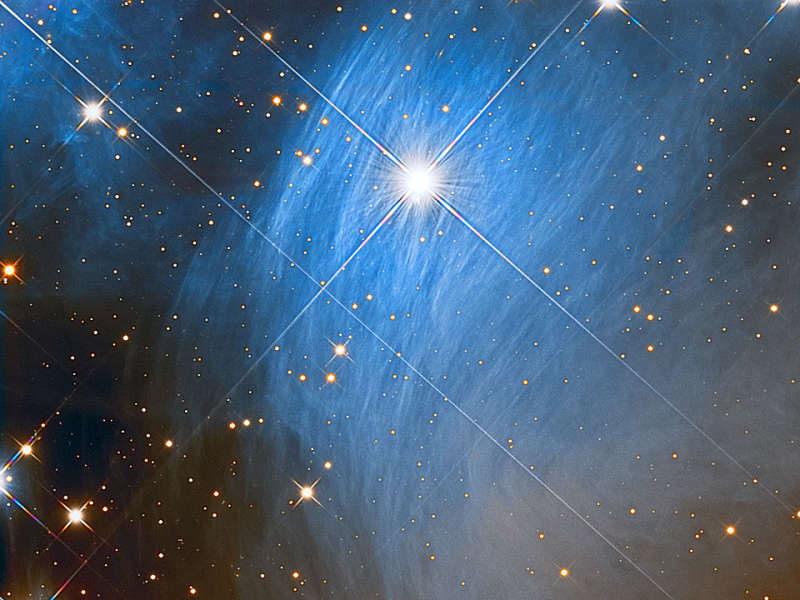
|
Credit & Copyright: Leonardo Orazi
Explanation:
Reflection nebulas reflect light from a nearby star.
Many small carbon
grains in the nebula reflect the light.
The blue color typical of reflection nebula is caused by blue light being
more efficiently scattered by the carbon
dust than red light.
The brightness of
the nebula is determined by the
size and density of the reflecting grains,
and by the color and brightness of the neighboring star(s).
NGC 1435,
pictured above, surrounds
Merope
(23 Tau), one of the brightest stars in the
Pleiades (M45).
The Pleiades nebulosity is caused
by a chance encounter between an
open cluster of stars and a dusty
molecular cloud.
|
January February March April May June July August September October November December |
| ||||||||||||||||||||||||||||||||||||||||||||||||
NASA Web Site Statements, Warnings, and Disclaimers
NASA Official: Jay Norris. Specific rights apply.
A service of: LHEA at NASA / GSFC
& Michigan Tech. U.
Based on Astronomy Picture
Of the Day
Publications with keywords: Merope - reflection nebula - molecular cloud
Publications with words: Merope - reflection nebula - molecular cloud
See also:
